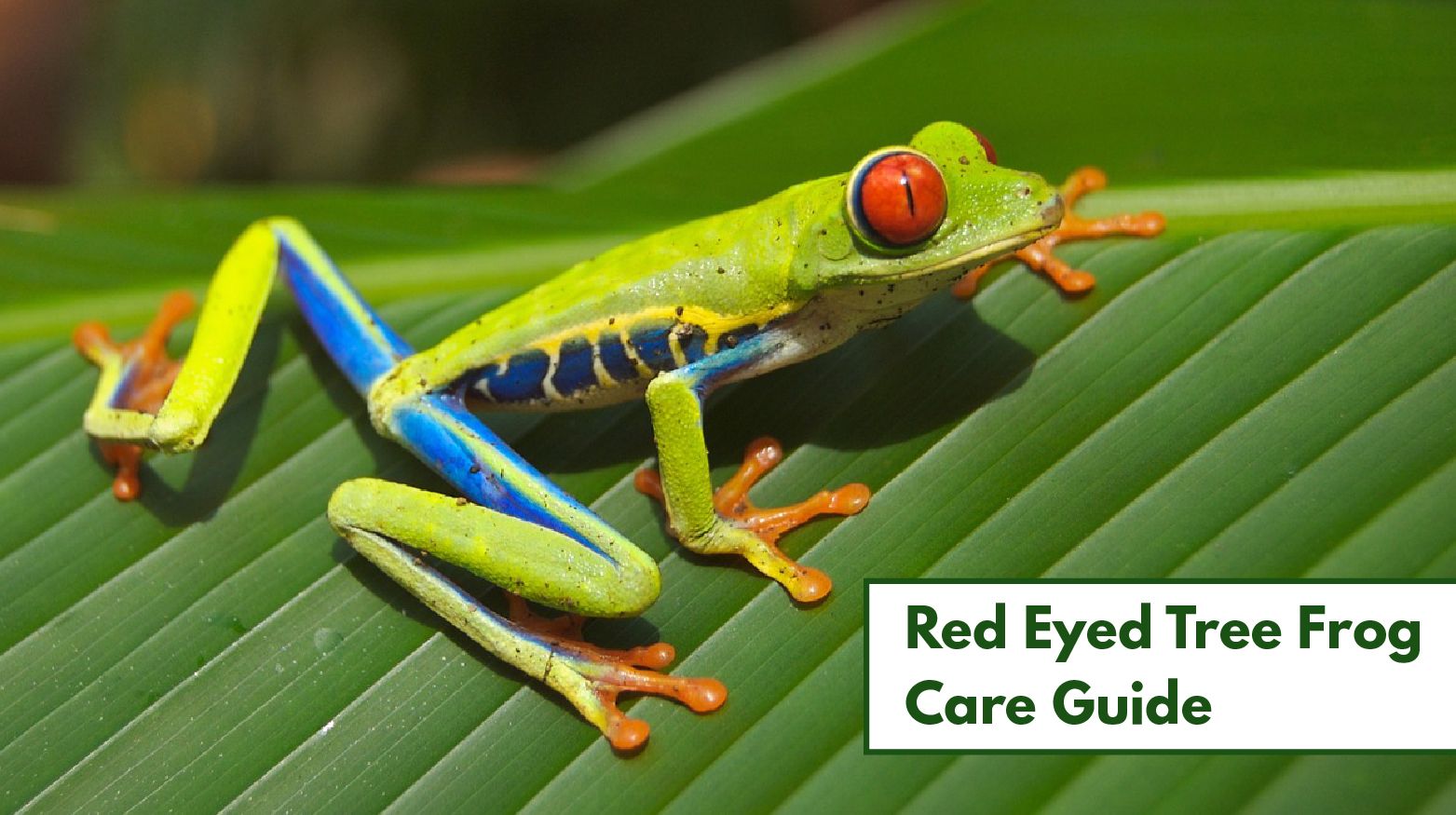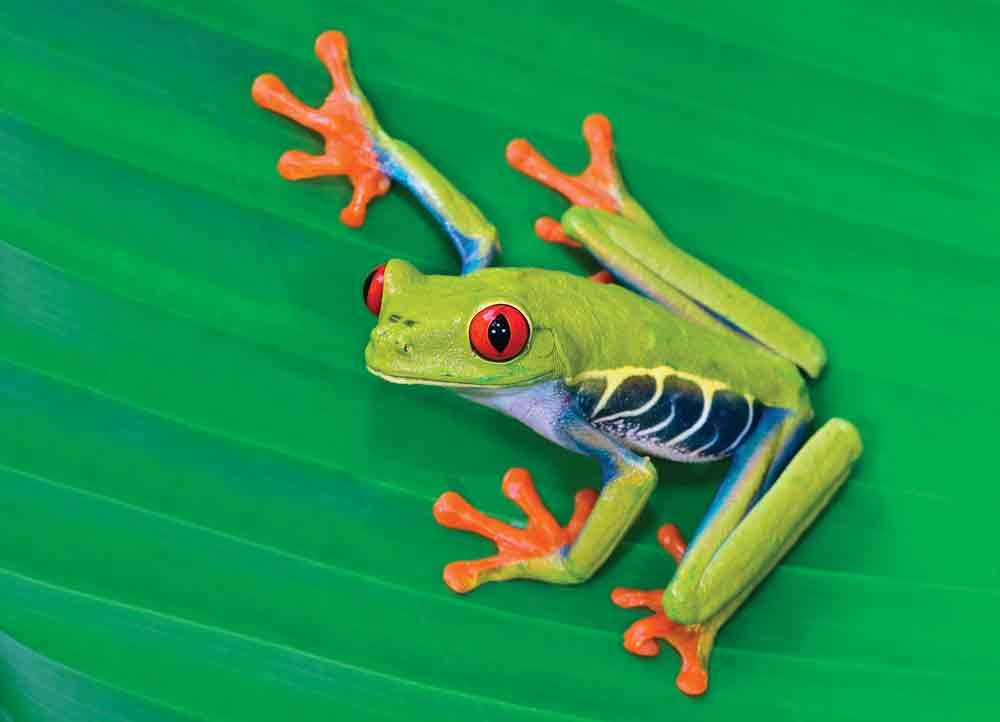Red-eyed tree frogs require proper care to thrive, including a suitable habitat and a balanced diet. Red-eyed tree frogs are fascinating and colorful amphibians that are native to rainforests in Central and South America.
With their iconic bright red eyes, vibrant green bodies, and orange feet, they are an attractive choice for reptile lovers. However, it is essential to provide them with appropriate care to ensure their well-being and longevity. This includes setting up a habitat that mimics their natural environment, ensuring proper temperature and humidity levels, providing a varied diet of live insects, and regularly monitoring their health.
By following these guidelines, you can create a thriving and healthy environment for your red-eyed tree frog.
Habitat And Enclosure
The Red Eyed Tree Frog requires a specific habitat and enclosure to thrive. When creating their home, it is important to choose the right enclosure. This involves considering the size, material, and ventilation options. Once you have selected the suitable enclosure, setting up the perfect habitat is crucial for the well-being of the frog.
Maintaining the ideal temperature and humidity levels is essential for their health and comfort. Including essential decorations and plants in the enclosure will create a stimulating and natural environment for the frog. These decorations provide hiding spots and climbing opportunities, mimicking their natural habitat.
By carefully selecting the enclosure and creating the perfect habitat, you can ensure the health and happiness of your Red Eyed Tree Frog.
Feeding And Diet
Red-eyed tree frogs have specific dietary needs to stay healthy and thrive. Providing them with the best diet is crucial. When feeding your red-eyed tree frog, it’s important to use proper techniques to ensure they receive the necessary nutrients. Adult frogs and juveniles have different feeding schedules, so it’s important to be mindful of that.
Avoiding common mistakes in feeding can also help prevent health issues for your frog. By following these guidelines, you can ensure that your red-eyed tree frog receives the proper care and nutrition for a happy and healthy life.
Health And Hygiene
Maintaining optimal health for your red-eyed tree frog involves recognizing common illnesses and diseases, quarantining new frogs, and regularly cleaning and disinfecting the enclosure. By staying vigilant and observing any changes in behavior or appearance, you can identify potential health issues and take appropriate action.
If you introduce a new frog to your collection, it is essential to isolate it and monitor for any signs of illness before introducing it to the main enclosure. Regular cleaning and disinfection of the enclosure is crucial in preventing the growth of harmful bacteria or parasites that could harm your frog.
Maintaining a clean and hygienic environment will help ensure the overall well-being of your red-eyed tree frog.
Handling And Interacting
Handling and interacting with your red-eyed tree frog is important for their overall well-being. Proper handling techniques involve gently cupping the frog in your hand and avoiding excessive pressure. Encouraging natural behaviors can be achieved by providing them with a suitable habitat, including plenty of plants and hiding spots.
Monitoring stress levels is crucial, and you can reduce anxiety by maintaining a consistent routine and minimizing disturbances. Creating an enriching environment for your frog will help keep them active and engaged. Consider adding branches for climbing and a shallow water dish for soaking.
Remember to always wash your hands before and after handling your frog to prevent the transfer of any harmful chemicals. By following these guidelines, you can ensure that your red-eyed tree frog receives the care and attention it deserves.
Breeding And Reproduction
Breeding red-eyed tree frogs requires a good understanding of their reproductive cycle. Create optimal conditions to encourage breeding. Take care of the froglets and tadpoles that hatch from the eggs. With some tips, you can increase the chances of successful breeding.
Common Challenges And Solutions
Red-eyed tree frog care can come with its fair share of challenges and solutions. Shedding skin is a common issue that can be dealt with by providing a moist environment and removing any remaining pieces. Injuries, such as abrasions or cuts, should be prevented by ensuring the frog’s habitat is free of sharp objects.
If injuries do occur, they can be treated with antiseptic solutions and monitoring the frog’s healing progress. Feeding problems can often be troubleshooted by offering a variety of food options and ensuring proper nutrition. Behavioral problems, such as aggression or stress, can be overcome by creating a suitable habitat, providing hiding spots, and minimizing disturbances.
Proper care and attention to these challenges can ensure the well-being of your red-eyed tree frog.

Credit: www.reptileadvisor.com
Frequently Asked Questions On Red Eyed Tree Frog Care
Are Red-Eyed Tree Frogs Easy To Care For?
Yes, red-eyed tree frogs are easy to care for.
Are Red-Eyed Tree Frogs For Beginners?
Red-eyed tree frogs are not recommended for beginners due to their specific care requirements.
What Size Tank Does A Red Eyed Tree Frog Need?
A red eyed tree frog needs a tank size of at least 20 gallons.
Do Red-Eyed Tree Frogs Need Uvb Light?
Red-eyed tree frogs do not require UVB light for their health and well-being.
What Do Red-Eyed Tree Frogs Eat?
Red-eyed tree frogs primarily eat insects, such as crickets, flies, and moths.
How Big Do Red-Eyed Tree Frogs Grow?
Red-eyed tree frogs grow to be approximately 2 to 3 inches in length as adults.
Can I Keep Red-Eyed Tree Frogs As Pets?
Yes, red-eyed tree frogs make great pets, but they require specific care and a suitable habitat.
How Often Should I Feed My Red-Eyed Tree Frog?
Feed adult red-eyed tree frogs 2-3 times a week and juveniles daily. Adjust based on their activity and appetite.
How Do I Provide The Right Humidity For My Red-Eyed Tree Frog?
Maintain humidity between 50-80% by misting the enclosure daily and using a water dish.
Do Red-Eyed Tree Frogs Need Uvb Lighting?
UVB lighting is not essential, but it helps simulate natural sunlight and promotes vitamin D synthesis in their skin.
Conclusion
Caring for a red-eyed tree frog requires attention to details and providing an environment that closely mimics its natural habitat. From providing the right temperature and humidity levels to offering a varied diet, these vibrant creatures thrive when their needs are met.
Regular cleaning and maintenance of their enclosure ensure a healthy and hygienic living space. It is important to handle them with care and avoid any stressful situations that can disrupt their well-being. By providing ample hiding spots and branches for climbing, we can create an enriching and stimulating environment for our red-eyed tree frogs.
Additionally, regular veterinary check-ups and maintaining a close watch on their health and behavior help detect any issues early on. With proper care and dedication, these captivating creatures can bring joy and wonder to their keepers for many years to come.
